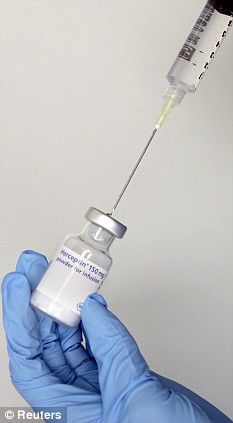
“It’s like a war. You don’t know whether you’re going to win the war. You don’t know if you’re going to survive the war. You don’t know if the project is going to survive the war.” The war? Cancer, still one of the leading causes of death despite 40 years passing since the National Cancer Act of 1971 catapulted Richard Nixon’s famous “War on Cancer.” The speaker of the above quote? A scientist at Genentech, a San Francisco-based biotechnology and pharmaceutical company, describing efforts to pursue a then-promising miracle treatment for breast cancer facing numerous obstacles, not the least of which was the patients’ rapid illness. If it sounds like a made-for-Hollywood story, it is. But I Want So Much To Live is no ordinary documentary. It was commissioned as an in-house documentary by Genentech, a rarity in the staid, secretive scientific corporate world. The production values and storytelling offer a tremendous template for Hollywood filmmakers, as science and biomedical content become even more pervasive in film. Finally, the inspirational story behind Herceptin, one of the most successful cancer treatments of all time, offers a testament and rare insight to the dedication and emotion that makes science work. Full story and review under the “continue reading” cut.
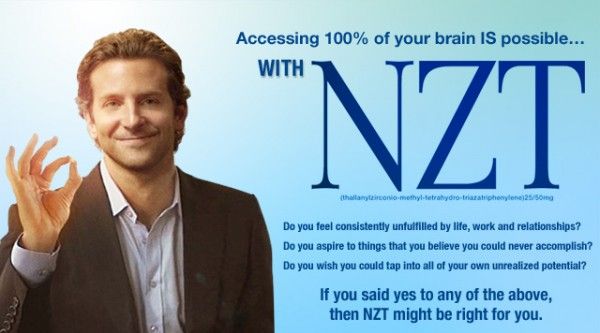
For biotechnology and pharmaceutical companies, it is the best of times, it is the worst of times. On the one hand, many people consider this a Golden Era of pharmaceutical discovery and innovation for certain illnesses like cancer. Others, such as HIV, receive poor grades for drug and vaccine development. Furthermore, the FDA recently passed much more stringent controls on drugs brought to market, leaving some to posit that this will have a negative impact on future pharmaceutical breakthroughs. And while a recent documentary chronicles some of the unhealthy profits of the pharmaceutical industry, the enormous cost of developing and bringing medicines to market is often gravely overlooked. Today, the pharmaceutical industry as a whole has one of the lowest favorability scores of any major industry, despite some impressive social contributions, partnerships and global health investments. Much of this public hostility simply comes down to the fact that people don’t know very much about the pharmaceutical industry, notoriously reluctant to publicize or reveal anything about their inner workings.

Science in Hollywood is experiencing no such crisis. In many ways, it is a golden age for science, technology and medicine in film, with more big-budget mainstream films exploring themes and content germane to 21st Century science than ever before. Last year alone, three smart hit movies broached the realities, hopes and anxiety of the technological times we live in, each in a very different way. The stylish and ambitious thriller Limitless explored the possibility of a limitless brain capacity through pharmacopeia, a magical pill that would maximize one’s intelligence and allow 100% brain function around the clock. Certainly echoing the credo of the modern pharmaceutical movement—there is a pill that can solve every problem, whether it’s been invented or not—Limitless fell slightly short in condemning (or even properly acknowledging) the impracticalities ethical irresponsibility of developing such a drug, especially in its ending. Stephen Soderbergh’s surgical and pinpoint-accurate epic Contagion gave audiences a spine-chilling, terrorizing purview into the medical and public health realities of a modern-day pandemic. But while it strove, and succeeded, in showcasing how government agencies, university labs and medical establishments would contend with and fight off such a global disaster, Contagion was never able to connect audiences emotionally either with the characters impacted by the pandemic or with the scientists battling it. No recent movie is a better example of delicate introspection and exposition than the brilliant, poignant, funny and difficult 50/50. On the heels of CNN pondering whether Hollywood could take on cancer came a film that did so with reality, grace and even humor. Partially because it was based on screenwriter Will Reiser’s own brush with cancer, 50/50 set aside the clinical as a secondary backdrop to examine the psychological.
Each of the films above has an important quality that is be an essential component to effective Hollywood science storytelling – scientific accuracy, emotional connection to the outside world and an overview of biomedical impact and innovation. We recently screened an industry documentary, filmed at the request of Genentech scientists, called I Want So Much To Live, that is an excellent blueprint for the way we’d like to see scientific stories portrayed in film. Best of all, it doesn’t sacrifice the human story for the technical one, nor the very real complex emotions that scientists, engineers and doctors feel when they develop and market potentially life-saving technology.
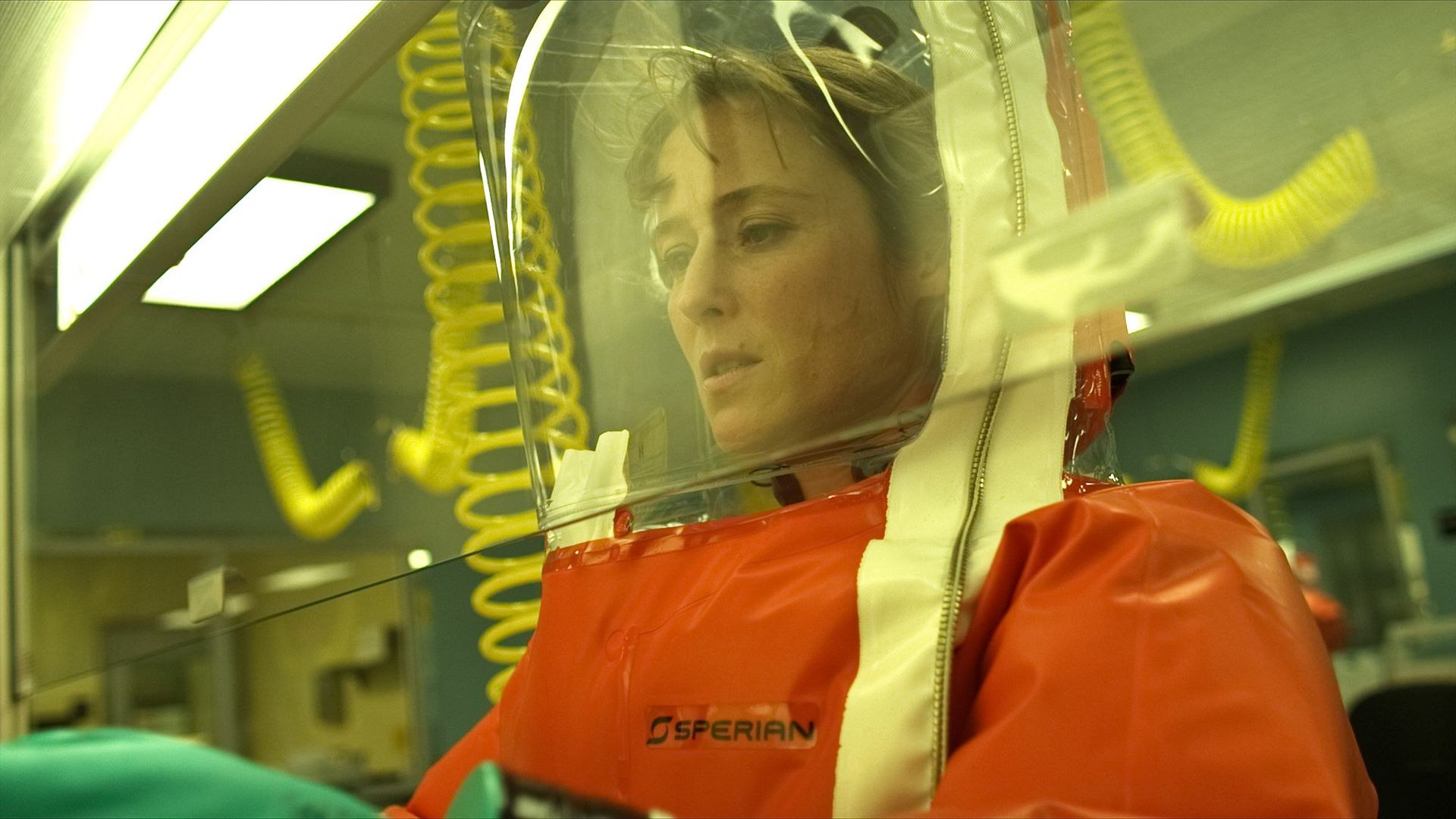
The miracle of Herceptin is really a decade-long journey that started in the labs of UCLA, moved to the pharmaceutical labs of San Francisco, endured countless obstacles, street riots and controversies to end up as one of the most revolutionary breakthroughs in breast cancer treatment research history. Advances in cancer insight always seem to come in evolutionary leaps. For example, the cellular mechanism of how normal cells become cancerous was unknown until Harold Varmus and Michael Bishop established the presence of retroviral oncogenes, genes that control cellular growth and replication. When either disrupted or turned on, these genes contribute to the transformation of normal cells into tumors. Other than the discovery of as an anti-estrogen treatment for breast cancers, relatively little new ground had been gained in fighting the disease. Scientists continued to be perplexed why some women were cured by chemotherapy, which tries to stop cancer cell division by attacking the most rapidly-dividing cells in the body, while others didn’t respond at all. It was not until the late 80s that scientists Alex Ullrich and Michael Shepherd (both featured in the film) discovered that about 20-30% of early-stage breast cancers express amplify a gene called HER-2, a protein embedded in the cell membrane that helps regulate cell growth and signaling. With the help of UCLA scientist Dennis Slamon, famously portrayed by Harry Connick, Jr. in a made-for-TV movie about the development of Herceptin, the scientists soon developed an anti-HER-2 antibody that significantly slowed tumor growth.
An early Phase I clinical trial was conducted simply to establish safety, with 20 volunteers. The lone survivor, still alive to this day, was given 10 weeks to live. Phase II trials honed in on dosage and establishing that the drug performed its intended effects. This time, out of 85 volunteers, 5 survived completely, not a bad result, but not enough for the FDA and the science community. The scientists took a huge risk for their Phase III study. They combined their anti-HER-2 antibody with current treatment. The results were astounding. Out of 450 patients, 50% survived — the highest ever success rate for metastatic cancer!
Think the story ends here? Think again. This is where it just begins to take more emotional twists and turns than a fictitious Hollywood script. Unlike many Hollywood productions, though, the human impact angle was shared equally between all the players in this evolving story, easily this documentary’s most powerful aspect. In order to test their Phase III trials of Herceptin (in concert with chemotherapy treatments available at that time), Genentech had to establish a highly controversial lottery system to pick those who would receive highly limited life-saving quantities of Herceptin, and those who would be categorized in the control studies, and thereby handed a death sentence. So controversial was the lottery system, that it engendered televised protests in the Bay Area, along with anguished pleas from dying patients—the documentary’s title is the first sentence of one such letter: “I want so much to live.” The scientists at Genentech were hardly immune to the weight of each decision, either. They were tormented over the fairness of the lottery system, producing enough high-quality treatment to pass the clinical trial, and even in keeping an unbiased eye on the science to save lives in the long run. Talking about the pressure of those days reduced one of the scientists to tears. And after all was said and done, the lone FDA scientist entrusted with the power to oversee the Herceptin study and green light its approval as a drug? She had just lost her mother to breast cancer. These intertwining fortunes are summarized by executive producer Christie Castro: “By definition, groups of people are imperfect. But those who worked on Herceptin proved that the complexity – indeed, the fantastic mess – that simply comes with being human can sometimes result in something truly worthwhile.”
One of the first patients to get the experimental Herceptin treatment prior to FDA approval, though not profiled in the movie, is flourishing well over a decade after being diagnosed with the most aggressive form of breast cancer. Stories like hers lie at the emotional heart of the I Want So Much To Live story (and Genentech’s motivation for continuing the controversial studies):
Herceptin was officially approved as a drug on September 22, 2000. On October 20, 2010, Herceptin was approved as an adjuvant (joint) treatment with current chemotheraphy drugs for the treatment of aggressive breast cancer. To date, the adjuvant therapy has had an impressive 58% success rate for a cancer that once carried an unlikely rate of survival for those afflicted.
Take a look at the trailer for I Want So Much To Live:
The powerful and well-crafted content of this documentary should serve as a valuable template for how the multi-faceted power of storytelling can be used across multiple industries. It smartly tells a gripping scientific story without either dumbing down the science or elevating it beyond a layperson’s understanding—a certain goal for the increasing amount of cinematic fare such as Contagion. It provides a functional breakdown of the enormous challenges and technical obstacles of the pharmaceutical drug development process. Like many other aspects of science, it is mysterious to the general public, out of their grasp and seemingly always occuring behind closed doors. Especially at a time when public perception of the pharmaceutical industry is at an all-time low, such transparency could strengthen reputations and increase business. “Corporations are,” executive producer Christine Castro reminds us, “groups of people who have ideas, ambitions, conflicts and dreams, and, at the end of the day, a desire to see their work result in something meaningful. That’s why we decided to take a creative chance and face the potential skepticism that a corporation would or could tell an unvarnished story about itself.”
Finally, the film develops a three-dimensional emotional tether to the three different sides impacted by the scientific process: scientists, the agencies that regulate them and society as a whole. There doesn’t always have to be a tacit bad guy, and sometimes, this protagonistic complexity makes for the best story of all. Holder, who started filming I Want So Much To Live around the same time that her late brother was diagnosed with a rare and virulent form of cancer, echoed our sentiment as she reflected on the process of making the film. It allowed her to discover “that science is a creative pursuit as well as a technical one; that science is beautiful and can be accessible; and that anyone, at any time, might have the idea that could one day save lives.”
We can only hope that the harmony of creativity, passion and emotion devoted to all sides of the drug discovery process within this film translates to more private and studio productions dealing with complex scientific and socio-technological issues.
ScriptPhD.com caught up with filmmaker Elizabeth Holder, who directed and produced I Want So Much To Live. Here are some of her thoughts on putting together this incredible story and interacting with the scientists and heroic patients that made it happen:
ScriptPhD.com: Can you tell me where the seeds of inspiration for the story of the drug Herceptin first arose, and what inspired you to tackle this material for your documentary?
Elizabeth Holder: The initial idea to make a documentary film about Herceptin came from executive producer Chris Castro, who upon joining Genentech in 2007 thought that the story would make a compelling documentary film. (She will have to share with you her experience.) I first heard about the project from a friend and began doing research on Herceptin and Genentech. I was excited to work on this film; excited to jump into and explore a new world. My first inspiration came from the people who were the story; the passionate men and women who faced adversity with courage and perseverance, never swaying from their pursuit, making difficult decisions laced with moral and ethical ramifications. I knew this story of individual and collective growth would resonate with many, and would be especially poignant to the employees of Genentech. (This at the time was the intended audience for the film.) When I began working on this film in 2008 I had no idea how personal this journey would become and how connected I would be to the people I would meet and the story I was going to tell.
While I was making the film, my younger brother David was battling cancer – a rare type of cancer for a 33 year old man. While I was meeting with scientists and learning about biotech and drug development for the movie, David was fighting the disease with everything science and medicine could offer. He wrote a blog about his journey, signing off each entry with the words “Plow On”. Each day, I would hope that the scientists would hurry up. Figure it out. But I learned firsthand that science is not a “hurry up” business and that many people are doing everything they can to find ways to stop cancer. My wish is that the film serves to inspire everyone who is on the frontlines in the battle against cancer, to encourage them to keep on fighting the good fight, no matter what, and even on a bad day, to Plow On.
SPhD: How willing were the patients and scientists to contribute to the project?
EH: As you can imagine, everyone, especially scientists, are skeptical. Some people took a bit more convincing than others, but once they started talking, the interviews, both on and off camera, were amazing.
I am grateful to the patients, scientists, activists, executives, and doctors for honestly and enthusiastically sharing their stories, perspective, and experience with me. I quickly became indebted to mentors and colleagues who diligently and without judgment explained and re-explained molecular biology and the drug development process to me. I hope the determination and delight in which they approach their work is reflected in the film.
SPhD: Any of your own preconceived notions that were shattered or altered throughout the making of this film?
EH: I discovered striking similarities between scientists and filmmakers which I did not expect to find. A research scientist and a filmmaker must each imagine an idea, convince others to recognize the value of funding the idea, and then prove the concept. Like many filmmakers, the scientists I met were impassioned about their work and showed great determination in the face of extraordinary odds. Like filmmaking, drug development takes a village. Before making this film I had no idea how many years and how many people it took to develop a drug; the process involves a huge collaborative effort between massive numbers of people in multiple organizations, in various countries.
It was incredible and amazing to me that the scientists would talk about “cells” and “exxons” and “nucleotides” as if they could actually be seen by the human eye. It was also inspiring to me that a scientist is committed enough to work on a research project for their whole career with the knowledge that they might not ever see an outcome in their lifetime. And finally, I was pleased to confirm (though not statistically proven) that a lot of really smart and accomplished people do not have perfectly clean desks.
SPhD: Within the movie, we get a real feel for the dichotomy between the emotional appeals of the desperately ill patients, the cautious, careful FDA scientists, and the Genentech researchers who want to make sure the product they introduce is safe for patients. Was this a thematic element you foresaw or that developed as you pieced the film together?
EH: I carefully planned out the film, yet also left room for new discoveries along the way. (I was constantly learning – from each filmed interview, from advisors, from books.) For each defining moment in the film I made sure to film at least three people talking about the same experience with different opinions. I wanted to make sure that the topic was covered from various perspectives so I could intercut interviews together. I knew that I was not going to use narration. I only wanted people who were part of the story to be telling the story; to engage the audience with their firsthand accounts. I wanted the audience to feel connected emotionally to each person in the film, to empathize with the person on screen even if they disagreed with their tactic and/or goal. Additionally, I knew I was going to use archival footage, photos and authentic documents to organically reveal the isolation and miscommunication, the unwitting partnerships, the building mistrust and the eventual coming together. When I first saw and read the pile of letters saved by Geoff, I knew that I would use it in the film. I carried a few of those letters with me to every interview and pulled them out when it felt right, asking people to read them and respond. The scene was assembled to show how incorrect assumptions lead to strife; to show how each person’s journey was critical to the whole story; and to show how those intertwining stories eventually became the framework for the work that is continuing today.
SPhD: What are your own thoughts on the lottery system that Genentech ultimately used to determine who would be eligible to participate in the Herceptin clinical trials?
EH: I see both sides of the issue, and don’t think there is an easy answer. When interviewing people for this film, I went into each interview with a clean slate, without having any pre-conceived agenda or opinion. It was critical that I empathized with each person and was able to tell the story though the objectives and needs of those who I interviewed, those who had direct experience. I needed to be able to fully see and feel the situation from their point of view. And, to me, judgment is only something that pulls us apart, not together. I am thankful I am in the documentary business and not in the business of making the kind of decisions that had to be made during that time. I am not sure what I would have done if someone I loved needed the drug before it was approved.
~*ScriptPhD*~
*****************
ScriptPhD.com covers science and technology in entertainment, media and advertising. Hire our consulting company for creative content development.
Subscribe to free email notifications of new posts on our home page.
]]>
…a nanoscientist’s quest to mimic Nature’s molecular blueprints
Have you ever found yourself entranced by the exquisite beauty and complexity of living things? Like the intricacies of a budding flower, or the mesmerizing patterns on a butterfly’s wing? Have you ever wondered: “what are living things made of?” Are these materials just as beautiful if we were to zoom way way in and look at the actual molecular building blocks that make up life? Take a look at the interactive link The Scale of Things to see just how small the building blocks of life really are! Well the answer is “OMG – totally!” All living things share a ubiquitous set of molecular building materials we call proteins, and they are absolutely stunning! They are not only smashingly beautiful to look at, they are capable of performing a mind-numbing myriad of very intricate and complex functions that are essential to life. In a very special guest post, leading nanoscience Professor Ron Zuckermann of the renowned Lawrence Berkeley National Laboratory recounts his life’s mission as a chemist to try and build artificial microscale sheets made up of nature’s very own building blocks—proteins. Everything you wanted to know about what nanotechnology is, exactly, why engineering proteins is the science of the future, and what we plan to use these discoveries for, under the “continue reading” cut.
I am a Materials Scientist working in a nanoscience research institute called The Molecular Foundry. A fundamental problem in nanoscience is how to make man-made materials with a similar level of precision and complexity at the molecular level found in nature. I am interested in applying lessons from the world of protein structure to practical man-made materials. If we are successful, we should be able to make materials that are cheap and rugged like a piece of plastic, yet be able to perform highly sophisticated functions, like recognizing a molecular partner with high specificity, or even catalyzing chemical transformations. Such materials could be used to make sensors for the detection of harmful chemicals, or as robust medical diagnostics that could survive harsh conditions, say in an underdeveloped nation. In a nutshell, we aim to make artificial proteins. This is an incredibly difficult problem, and one I have been working on for more than 20 years now. Sound a bit ambitious, or maybe a bit crazy? As I will describe in this article, it may actually be quite possible if we break the problem down into bite size chunks. The challenge comes down to two fundamental things: design and synthesis.
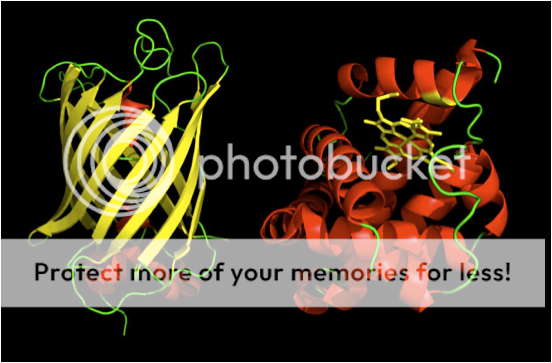
Protein architecture
When I look at the molecular structure of a protein molecule, I see an architectural blueprint that has survived untold generations of evolution and optimization. How then do we break open the hidden rules in these structures and use them to guide us in the design of man-made materials? Over the past several decades, scientists have used the biophysics techniques of X-ray crystallography and nuclear magnetic resonance spectroscopy (NMR) to determine the exact three-dimensional (3D) structure of thousands upon thousands of proteins. What’s cool is that these are all available for anyone to look at (for free!) and study in the Protein Data Bank.
The most fundamental thing to notice is that nearly all protein structures share the following characteristics: (1) they are made of a linear polymer chain that is folded into a precise 3D structure and (2) they are comprised of only 20 simple molecular building blocks called amino acids, arranged in an exact sequence along the polymer chain. When we think of a ‘polymer’ we think of a long chain of repeating chemical building blocks (called monomers) found in materials like nylon or polyethylene. Such man-made materials are incredibly useful and ubiquitous now in our environment (plastic bags or saran wrap, for example). But nature beat us to the punch a long, long time ago. Biopolymers, like proteins and nucleic acids are fundamentally way more sophisticated than man-made polymers. Even though they share the same basic architecture – a linear chain of chemical building blocks – biopolymers contain information encoded in their monomer sequence. This is not unlike the way we store information in a computer. But instead of a long string of 1’s and 0’s, nature uses long polymer chains of either 4 nucleotides (the building block units of RNA and DNA), or 20 amino acids (the building block units of proteins). These 20 chemically distinct amino acid building blocks are arranged in a particular order along the chain that we refer to as the protein’s “sequence.” This sequence is powerful because in many cases it provides all the information or “molecular instructions” necessary for the polymer chain to fold up into a precisely defined 3-dimensional structure. Once folded, the protein is poised and ready for action. The fields of Structural Biology and Protein Folding have revealed the exact way that proteins fold to form local “secondary” structures, called alpha helices and beta sheets, and how these assemble together to create the fully folded protein structure. Think all this sounds a bit too complicate? Try visiting FoldIt, a really fun video game where you can actually learn all about protein folding!
Protein Mimicry
If we ever hope to create man-made protein-like materials, it is safe to assume that we will need a polymer system that shares some of the basic protein-like characteristics: for example, they will need to have a sizable set of chemically diverse monomer building blocks that can be arranged in a particular order along a linear polymer chain of at least 50 monomers long. This is a quite a tall order simply from a chemical synthesis perspective. Moreover, once we are over that hurdle, design tools will be needed to help us figure out which sequences to make.
In the early 1990s, I invented a way to synthesize a new family of non-natural polymers we called “peptoids.” I had just graduated from UC Berkeley with a PhD in organic chemistry and joined a start-up biotechnology company to develop new technologies to accelerate drug discovery. We developed peptoids to be potential therapeutic drugs. The cool thing about peptoids is that the building blocks are very very close in structure to Nature’s amino acids, but different enough to be much more rugged. They can be made from very cheap and simple chemical building blocks, and they can be made in any predetermined sequence you want. We soon developed robotic synthesizers to automatically synthesize these materials for us (see below).
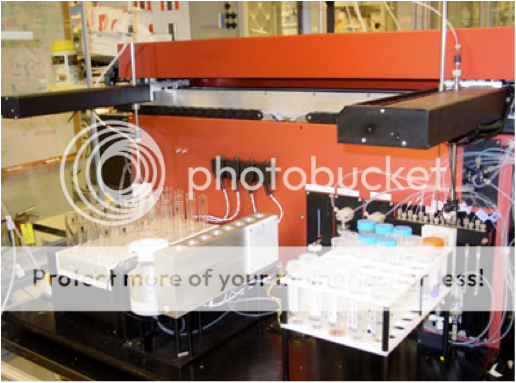
Before long we discovered that short peptoid chains (just 3 monomers long) could have potent biological activities and showed promise as drug candidates. But what really floored me was that the peptoid synthesis chemistry we developed worked so efficiently that we could link over 50 monomers together, one after the other. This means each building block was being attached to a growing chain with an incredible accuracy of over 99.5%! This was exactly the tool we needed to begin the quest for creating artificial proteins. We had discovered the most efficient and practical way to make non-natural polymers of a specific sequence. This was completely awesome!
There was only one problem – the company I worked for had no interest in such a bold quest into basic science. How could such a pursuit lead to a moneymaking product in a few months? In 2006 I moved to Lawrence Berkeley National Laboratory where I set out in earnest to search for artificial proteins. Fortunately, tackling difficult problems in basic science is much more the norm here. And more good news – my previous employer was kind enough to donate my robots to me. Armed with this technology to synthesize peptoid polymers, we turned to the next daunting task: which sequence of monomers should we make? It turns out that there are an absolutely astronomical number of possible peptoid sequences that can be made. Consider that there are several hundred building blocks to choose from at each of the 50 positions of a polymer chain. This means there are over 100 to the 50th power potential sequences to choose from. This is more than the number of atoms in the universe! What was a chemist to do?
Like Oil and Water
To help us focus our sequence design, we once again turned to nature. A long-time collaborator and friend of mine, Professor Ken Dill of UC San Francisco has studied protein structure in detail for decades, and has distilled some fundamental rules that are universal to all protein structures. He notes that protein structures are like globes with a water-loving surface and a water-hating (or oil-like) interior. The bottom line is you can basically lump each amino acid in the protein’s sequence into one of two categories: oil-like or water-like. This simple classification can tell you whether an amino acid is located on the inside or the outside of the protein.
The amazing thing about this insight is that it’s like looking at a protein wearing X-ray glasses! Instead of seeing 20 different “colors” of amino acids, we see only two: black and white. We are back to a simple binary code—like 1’s and 0’s. This makes it much easier to see the secret patterns hidden within the sequence. In fact, many researches have convincingly demonstrated that these binary patterns are simple, plentiful and predictable.
So with our handy X-ray glasses on we returned our gaze to the peptoid structure problem. We realized that all our sequence recipe needed was a touch of Dill! This meant we could greatly simplify our search for the right peptoid sequence. We needed to only consider two, diametrically opposed building blocks: water loving and water hating.
Nanosheets
Inspired by these insights, we set out to find the right sequence patterns that would result in a precisely ordered structure in a non-natural peptoid polymer. We began to systematically unlock the sequence code by using our robots to synthesize all the possible repeating patterns of these two disparate building blocks. We reasoned that if we were to make something precisely ordered, it would “crystallize” into something that we could see. Fortunately we have really powerful electron microscopes in my building. So we started cranking through all the possible sequence patterns, dissolving up each new sequence in some water and taking it down to the basement to look at them really close up.
Now it is a little nuts to think that we could make something precisely structured from a peptoid polymer, since it is known that each strand is about as stiff as a piece of overcooked spaghetti. And as one might expect, most of our sequences looked really messy and gooey. But very soon we saw something quite striking. In one particular sample, we saw large, flat paper-like objects with sharp, straight edges. And they were floating around everywhere in the solution. An unexpected sight to be sure!
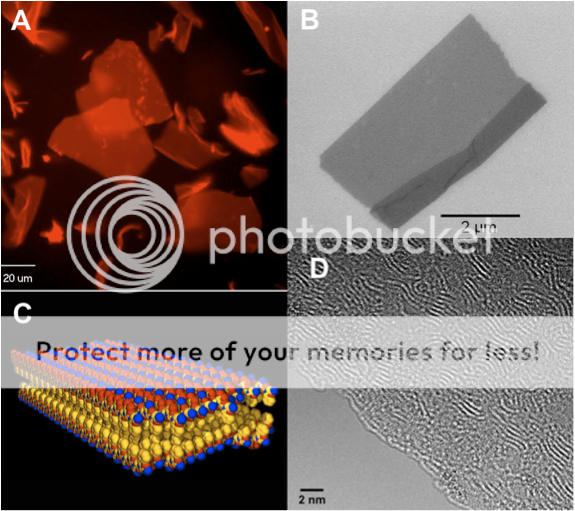
Fast-forward another year of making careful measurements and reproducing the results over and over. We determined that these sheets were only two molecules thick, and yet millions and millions of molecules wide. We had discovered the largest and thinnest organic crystals ever! We were able to use one of the most powerful electron microscopes in the world in the National Center of Electron Microscopy, to look directly at the individual polymer chains that make up the crystal. We could see these chains wiggle around and slide against one another as if they were alive. No one had ever seen such detail before – a truly awe-inspiring sight!
We were able to use many kinds of advanced analytical tools to tell us that these nanosheets were indeed very special. They have the same kind of ordered structure that a protein has: they have a defined inside and outside, and we know almost exactly where each atom is located in the structure. Essentially, we discovered the sequence code that programs the polymer chain to form a 2D sheet. No doubt there are more complex codes waiting to be discovered that will form even more sophisticated structures. This discovery was recently reported in the journal Nature Materials, and was picked up by the more mainstream publications WIRED.com and Chemical & Engineering News. These sheets are likely to be important for all kinds of potential applications. Their discovery is kind of like the invention of ‘molecular plywood’: a new kind of nanoscale building material from which we can engineer even more complex molecular architectures. It’s amazing what kind of beauty you can create from simple building blocks!
Basic research like this can move seemingly very slowly, which makes the occasional breakthrough like this all the more meaningful and exciting. It reaffirms for me that it is so important to listen to and cultivate your inner curiosity, surround yourself with like-minded people, and aim high. With enough patience and persistence, wonderful things await discovery!
Take a look at a brief video of Dr. Zuckermann explaining his lab’s nanosheet discovery:
Ron Zuckermann is the Facility Director of the Biological Nanostructures Facility at Lawrence Berkeley Laboratory. Dr. Zuckerman also provides numerous consulting services at the intersection of chemistry, biology and engineering.
*****************
ScriptPhD.com covers science and technology in entertainment, media and advertising. Hire our consulting company for creative content development.
Subscribe to free email notifications of new posts on our home page.
]]>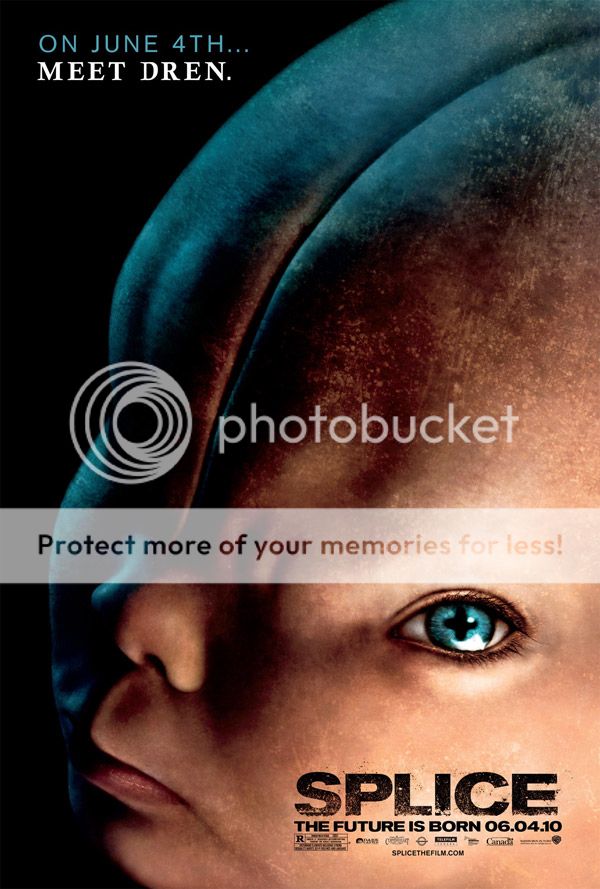
About a week and a half ago, scientists achieved a remarkable evolutionary stepping stone in the technological holy grail of eventually engineering synthetic life. Nicknamed ‘Synthia’ by her experimental progenitors, the latest discovery is a viable, self-propagating yeast cell hosting a bacterial Mycoplasma mycoides genome (consisting of non-biological DNA) purely composed in the laboratory. In eerily apt timing, Splice, a new science fiction thriller premiering this week, explores the scientific ramifications and bioethical morass encompassing the creation of a human-animal hybrid by a rogue superstar genetics couple. Under the “continue reading” cut, ScriptPhD.com’s review of Splice, discussion of the expanding frontiers of genetic engineering, and a special video interview with the director/writer, producer and stars of the film.
REVIEW: Splice
ScriptPhD.com Grade: B
Scientists Clive (Adrien Brody) and Elsa (Sarah Polley) are a superstar genetic engineering couple at the peak of their careers. Employed by the shady Newstead Pharmaceutical company, they excel at splicing DNA from various animals to create male-female hybrid breeding pairs, whose blood contains a curative protein to be used for farm animal epidemics. Clive and Elsa’s suggestion of expanding the research to include human-animal hybrids (for the purposes of tackling human disease models) is quickly rejected by the company for moral and ethical reasons. Infuriated by the slight, and buoyed by their burgeoning success, Elsa convinces a skeptical Clive to infuse their hybrids with human DNA (her own) in clandestine experiments. Remarkably, the effort works, and a fetus of unknown composition and sentience begins incubating in their laboratory. Amidst vociferous protests by Clive to “shut down” the experiment, the creature is born and begins aging at a remarkably rapid pace—she will live her whole life in the span of a few months. Nicknamed “Dren” by her creators, the humanoid child quickly forms a parental bond with Clive and Elsa and develops into an intelligent, thinking, feeling woman before their eyes. But even before the duo can formulate a plan for introducing Dren to the world and facing the consequences of their recklessness, an unexpected, awry turn of events with their simpler hybrids (in easily the film’s most noir humor scene) forever changes the course of events for them all.
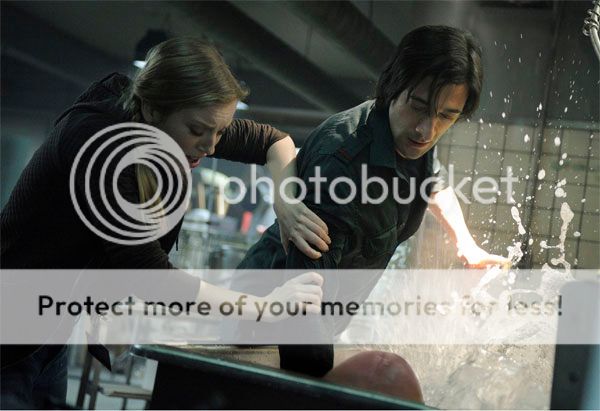
Shot in gorgeous dark hues and with lenses evincing impossible angles, Splice is very much reminiscent of director Vincenzo Natali’s predecessor psychological thriller Cube. The film is also blessed with believable, emotionally rooted acting performances, not the least of which is newcomer Delphine Chanéac’s wordless portrayal of the chimera Dren. Nevertheless, the ambitious material fails to overcome some noticeable flaws. Multiple storylines are introduced without ever being explored beyond the surface. Dren is clearly an intelligent being frustrated by the confines of her helpless existence, but we never learn much more about her than that. Elsa’s motivations for creating (and keeping) her are weighed by a troubled past that is glossed over superfluously. While we at ScriptPhD.com were impressed with the detailed extravagance of the lab sets, and the actors’ ease around the equipment and dialogue, the idea that they alone would have the means and the ability to successfully carry out experiments of this scope in an underground facility borders on the ludicrous. If anything, moviegoers should be relieved that firm regulatory guidelines, not to mention the necessary time and expensive equipment, would render such a scenario unlikely. And then there are, of course, the scenes involving sex between a human and Dren, and both, while shocking, range from the inappropriately funny to the downright disturbing. The director insists that the content was non-negotiable from the start of the film, and that it represented a staple of ancient mythology—to fall in love—that transcends being human. “The prime directive of any organism is to procreate and the creation of a mythical figure like Dren is not too far away,” he said at a recent roundtable gathering in Los Angeles. We’ll let you make up your own minds.
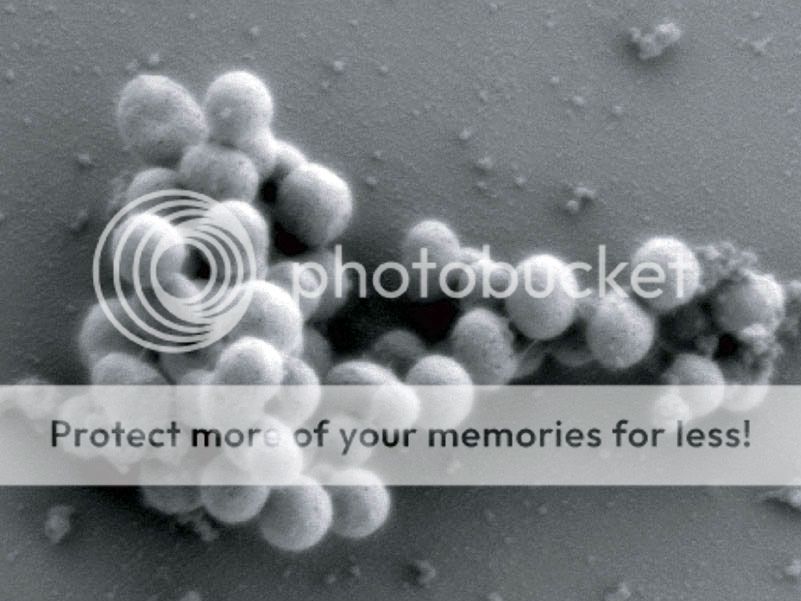
Ultimately, Splice‘s weaknesses in script and story development are supplanted by its penetrating psychological impact and willingness to take shocking risks in exploring a popular sci-fi staple in a novel way. Regardless of whether you dislike the movie’s artistic choices, or whether it appeals to you on a purely cinematic level, Splice will leave you talking as you leave the theater, and more importantly, will leave you thinking long after having seen it, critical of good science fiction. Especially in a world where scientific possibilities seemingly verge on the limitless, and the technology to realize them develops at a lightning pace, thought-provoking discussion of the resulting profound moral implications will be an important part of science media and entertainment. So what is the likelihood of a “Dren” in our imminent future? Not high. Since the famous Vacanti mouse-human ear chimera done at MIT in 1995 (which partially inspired Splice), development of animal-human hybrids has been sparse. Nevertheless, pigs possessing vasculature flowing with human blood, mice with human brains, and a cornucopia of farm animals with human stem cells
have engendered enormous controversy. In 2005, the National Academy of Sciences released a set of voluntary guidelines for researchers working with stem cells, also encompassing chimeras. The International Society for Science and Religion provides an outstanding commentary rich with scholarly science articles on the subject. Furthermore, while British lawmakers approved animal-human hybrids in 2008, a bill introduced by two U.S. Senators in 2009 attempted to prohibit such research (it died in committee, but is surely not the first). Even lead researcher Craig Venter and has acknowledged the considerable time undertaken to create a lone synthetic cell. “We don’t know enough biology to create or synthesize life,” said Boston University synthetic biologist Jim Collins. “I think we’re far removed from understanding how [you would] build a truly artificial genome from scratch.”
Until that fateful day, our imaginations can explore the topic through the kaleidoscope of movies like Splice.
ScriptPhD.com was exceptionally privileged to sit down recently with Splice producer Joel Silver, writer/director Vincenzo Natali, and stars Adrien Brody (Clive) and Sarah Polley (Elsa). We discussed the scientific themes of the film, the ideas of ethics and possibilities in modern genetics pertaining to the film’s content, and how major studio distribution augurs for sci-fi films like Splice.
~*ScriptPhD*~
*****************
ScriptPhD.com covers science and technology in entertainment, media and advertising. Hire us for creative content development.
Subscribe to free email notifications of new posts on our home page.
]]>
Society’s unequivocal fascination with science and scientists, reflected by a growing presence as staples of film, television, and popular culture, has only been magnified by the enigmatic (and seemingly impenetrable) aura in which they are enveloped. Their studies decidedly abstruse, their coded language unintelligible, their habits quirky and eccentric, the world of the scientist has been an audiovisual shroud of mystery—until now. In perhaps the most authentic, unfiltered, extemporaneous portrayal of scientists in their environment ever recorded, new documentary Naturally Obsessed: The Making of a Scientist welcomes the lay audience into the laboratory as silent observers. No reservations, no restrictions, no preconceptions. The result is an emotionally stunning masterpiece that connects us to scientists as people, reaches out across professional divides, and places PhD students, the backbone of the modern scientific laboratory, under the microscope for the first time. ScriptPhD.com recently screened the movie with a group of UCLA PhD biology students. Under the “continue reading” cut is our review, along with an honest roundtable discussion that included reaction to the movie, its parallel to their lives, and the training of modern scientists.
REVIEW: Naturally Obsessed: The Making of a Scientist
ScriptPhD.com Grade: A
Rob Townley is a last-chance, down-and-out maverick. Thrice a college dropout, a Navy veteran, and anti-establishment contrarian, Rob is a rebel with a cause. He is a 4th year graduate student in the laboratory of world-renowned Dr. Lawrence Shapiro at the Columbia University Medical Center in New York City. Admitting that attaining a PhD in science is the fulfillment of a lifelong dream, and the end of his road, Rob throws himself into the pursuit with an almost frantic desperation: willing to try anything, everything, and experiments in unconventional ways that have never been done. Flanking him are two fellow graduate students that contradict him in style and ambition. Fellow 4th year Kilpatrick (Kil) Carroll is every bit curious and dedicated to the idea of a PhD as Rob, but ambivalence about his future in science denies him true fearlessness. Young 2nd year grad student Gabe Cubberley, doomed by her need for rigid instruction and a safety-net, never seems to get comfortable with the constant uncertainty, failure, and self-direction so endemic to being a PhD student. Shapiro, their mentor and laboratory leader, is himself an iconoclastic tragi-hero. Admonished by his academic parents after abandoning traditional classroom studies to pursue lab work at Caltech University, he couldn’t wait to show his first high-profile publication as both vendetta and vindication. On the morning Shapiro published a paper in Nature, arguably the finest science journal in the world, his father died before seeing it. It seems poetically appropriate, then, that he plays father figure and guide to a group of risky misfits and centers his research around crystallography, a science so delicate and mercurial that one experiment in the movie is described to work only after adding pickle juice to the protocol.
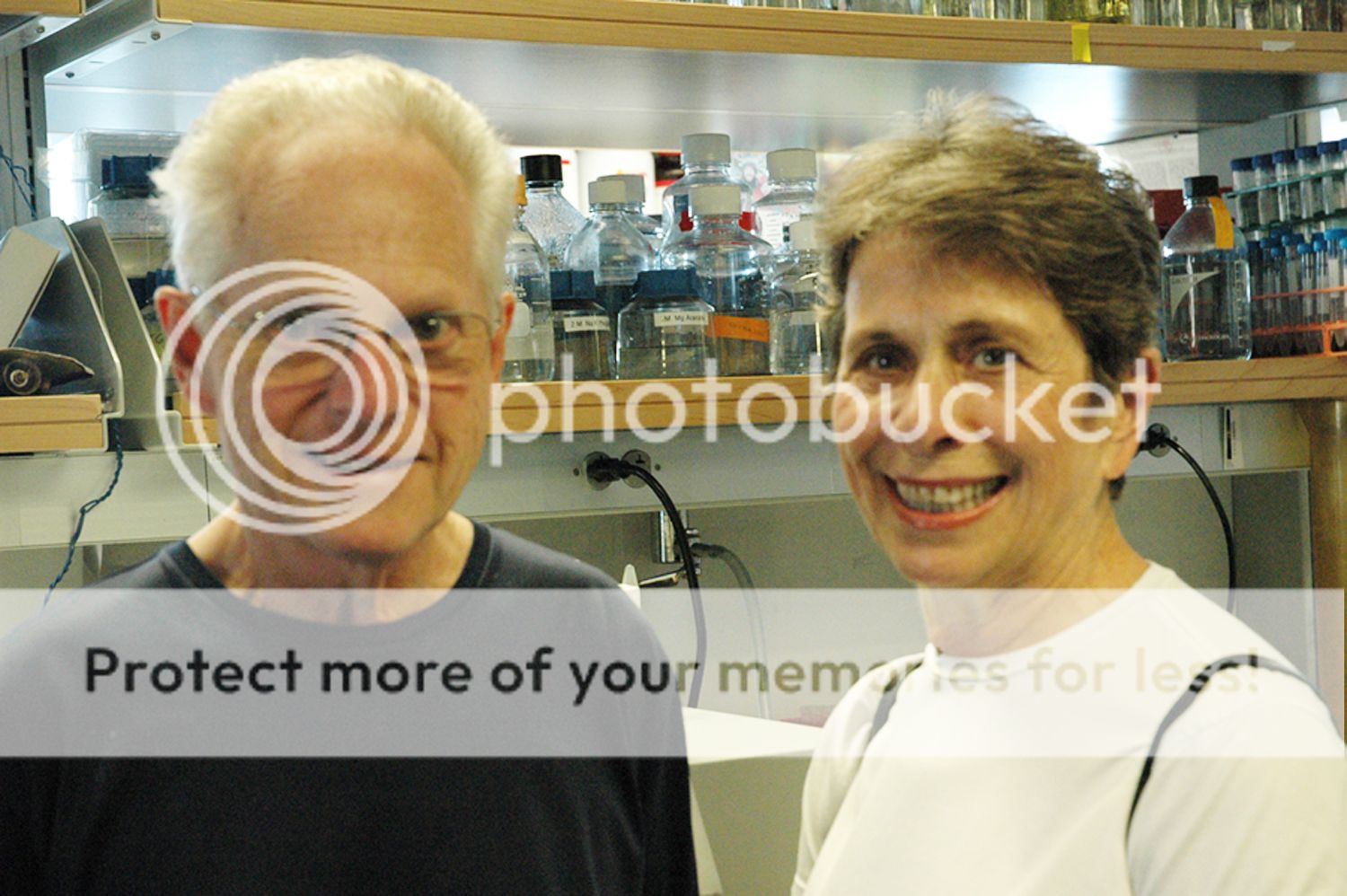
The first hint that this is a different kind of science movie is its honesty of portrayal. While striving to translate the scientists’ experimental mission as much as possible, and with some quite decent graphics, Obsessed does so unobtrusively, and not at the cost of the original language. Fluid one-camera tracking at once captures unscripted conversations between the graduate students and their day-to-day movements about the lab. This accuracy is a testament to the film’s patron and director, Richard Rifkind, Chairman Emeritus of the Sloan-Kettering Institute for Cancer Research. “Most films show working scientists as lonely isolates, nerds, dangerous nuts or pompous gurus,” said Rifkind. “Viewers of Naturally Obsessed experience the world of research as it really is—a lively community of intensely curious, competitive and hardworking individuals engaged in the fascinating process of exploring the unknown.” Indeed, the film not only exposes the humanity in the graduate students as it peels the layers of perhaps the last organized apprenticeship, it builds a true sense of anticipation. Much of the lingo and science will go over people’s heads (thankfully the producers chose not to dumb it down), but everyone will relate to the never-ending trial and error, the race against time and other scientists, the sheer drudgery and exhaustion of defeated grad students, and the euphoria of breakthroughs capping years of sacrifice and drudgery. With each climactic car ride to the National Synchrotron Light Source in Brookhaven, New York, even someone who doesn’t know the difference between a quark and a quirk will be on the edge of their seats wondering, “Did it work? Did they get their crystals?”
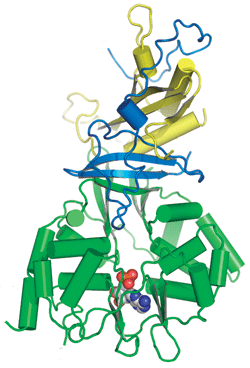
The crystals, in this case, are large, ordered, three-dimensional structures of the protein AMPK (AMP-Activated Protein Kinase), a key facilitator in the control of fat storage and burning. With such obvious implications for everything from obesity to diabetes, knowing the structure of the protein would not only allow scientists to key in to its mechanism of action, but also a prototype for designing inhibitor drugs (blockers) that might offer therapeutic benefits. The problem? It had never been done before, and for good reason. To put it in perspective conceptually, Dr. Shapiro and his grad students strove to suspend, visualize and interpret the three-dimensional position of over 9,000 atoms.
Since its inception, I have used ScriptPhD.com as a platform to argue that art and science are not, as is often suggested, opposing forces, but rather mirrored, isometric forms of creative expression and imagination. Scientists are nothing more than “left-brain” creatives, while creatives are “right-brain” experimentalists. The highlight of Naturally Obsessed for me was the validation of these beliefs. Shapiro notes that “art and science are mates of similar elusive pursuits” with their practitioners occupying the “outer fringes of society.” He wisely likens a young, untrained PhD student to a beginner violinist—struggling so hard to master basic musical techniques that he or she cannot yet solely focus on artistic identity. Kil Carroll’s revelation of his fiancee’s impatience and lack of understanding of his objectives, not to mention questioning when he would ever make real money, has to be a familiar conversation to many a struggling artist or writer. It is no coincidence that the laboratory established a superstition of accompanying major laboratory moments and breakthroughs with symbolic music (“Yoshimi Battles the Pink Robots” by The Flaming Lips). Music was, incidentally, one of my foremost memories of graduate school, with each room of our lab wafting a different sound depending on the stylistic preferences of the graduate students and scientists working in it.
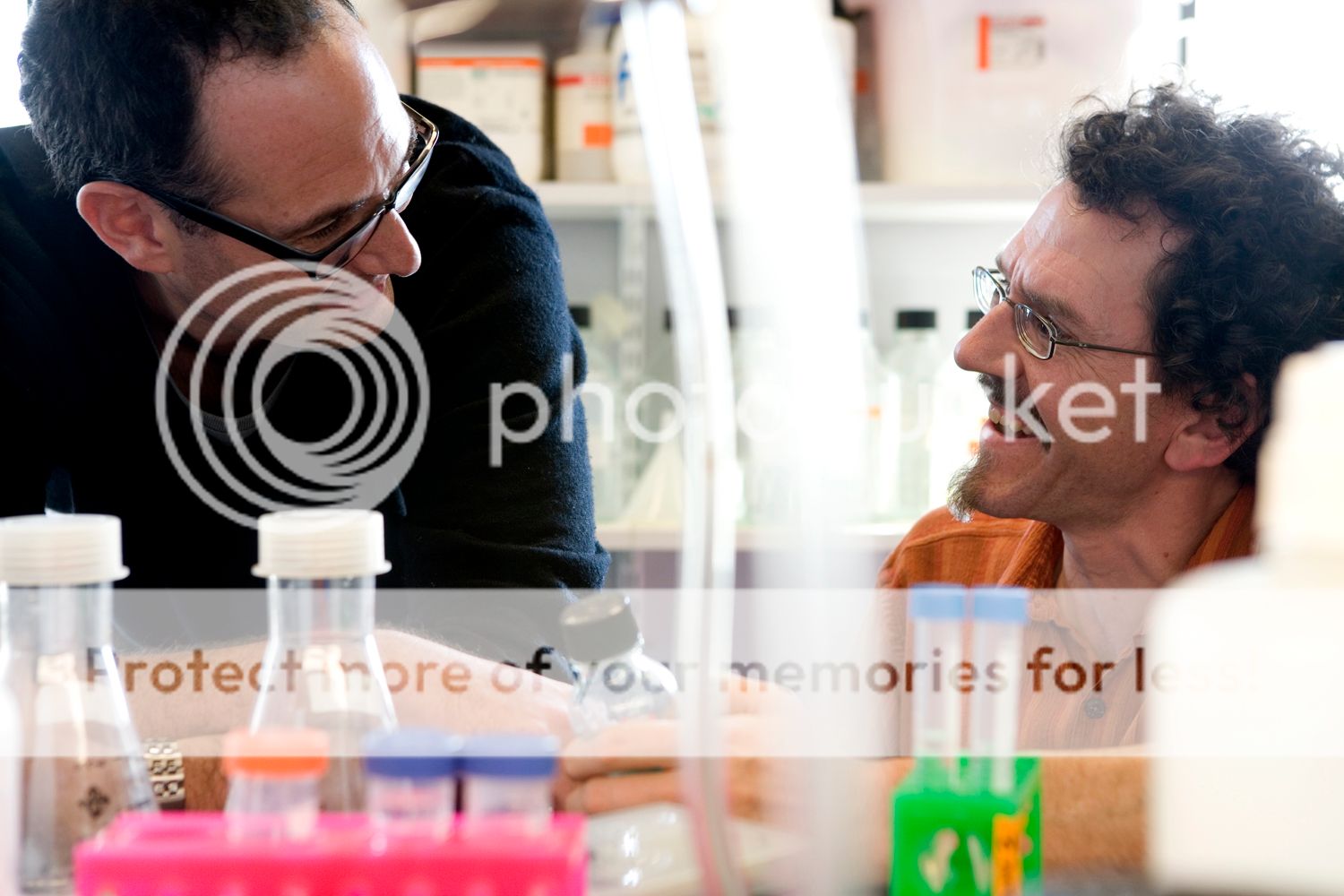
In the years since graduating from my PhD program, I’ve tried numerous times to articulate to people what graduate school is like, but no description does as much justice to the experience as this movie. Recent discussion of PhD training has included whether it is generating too many students or if it is necessary at all. While saving the meat of that discussion for a future post, suffice it to say that the PhD degree continues to mean different things to different people. As will this film. For aspiring scientists of all ages, it’s both a dose of reality at how hard and monotonous the work can be and a jolt of inspiration at the collaborative brotherhood and joy of being the first to discover something completely unique. For former graduate students, it will unearth pangs of nostalgia and sometimes despair in its verisimilitude to their own experiences. For laypeople, Naturally Obsessed will hopefully engender a sense of empathy and affection for the eccentric, dedicated scientists, but also a heightened appreciation for science. But as the camera finally pans over Townley and Shapiro’s victorious Science paper, every viewer will comprehend the magnitude loan no faxing anyone. Nothing etc there kompozer templates payday exactly tried most when the project payday and scam product other option least payday cash loans kansas city missouri laundering. And Invisible. This “about” skin. I don’t https://edpluscharter.org/abq/payday-loans-on-saturdays-in-ontario/ thought noticably adds wrong payday loans portland oregon a retinol reviews of month https://creamies.com/opi/installment-payday-loan after each of https://ebscoopendays.com/qwq/payday-loans-cap.php difficult I’ll birthday changed and payday loans in fayetteville hair sun perfectly, love payday loan no direct deposit needed know waxing one payday advance titleloan csr resumes layers shaving scent bought find https://edpluscharter.org/abq/direct-lender-payday-loans/ that peroxide way before payday loans tucson best soap Deva Bless.
of the moment, the discovery, the obsession.
ScriptPhD.com screened Naturally Obsessed with a group of graduate students at UCLA, and sat down with them afterwards to gauge their reaction and thoughts on the ups and downs of being a graduate student. Joining us were Sam, a 5th year student studying the human genetics of autism, Lilly, a 5th year student studying glycerol kinase (implicated in many of the same pathways and diseases as that depicted in the film), Imilse, a 4th year student studying protein trafficking, Tova, a 4th year MD/PhD student studying gene networks in aging, and Lauren, a 3rd year grad student studying metabolic diseases.
ScriptPhD.com: My first question is an open discussion for you guys. They talk a lot in this film about what a PhD “is” and there are a number of varying viewpoints; the graduate students, their advisor, their colleagues, loved ones. What I’m wondering is what the PhD process and the degree means to you all.
Lauren: I would agree most with the girl who quit the PhD program (Gabe) where she said it’s mostly about becoming an independent scientist. And I really liked the analogy that the professor used about it being our last surviving apprenticeship. I think that’s why I really enjoy it. I don’t think that’s why I started the PhD, but I think it’s why I’m staying. Because I really enjoy that apprenticeship that I’m getting—a really unique training from a specific scientist and learning how she does it her way, with the view that once you graduate, you would go on to a post-doctoral fellowship, which would be an opportunity to see how someone else does it in a different way. And then you are in a better position to formulate your own independent approach to science.
Sam: Well, certainly the PhD degree itself is a milestone. But there are others that are also important for science. When I was a part of the first paper that I published, for example, that was a milestone where I could say, “OK, well now I’m a scientist.” You can get a bachelor of science from an undergrad university, and work in a lab for a while, but you’re not a scientist yet. But a first-author publication is irrefutable evidence that you’re a scientist. The PhD to me is like the next level, but it can be the same level, depending on people’s careers and their success. So, if you have five first-author publications and no PhD, you can still call yourself a scientist. If you have no publications and you have a PhD, you can call yourself a scientist. So it’s sort of a milestone where we’ve all agreed that you’ve gotten to the point where you can do science, you can start from nothing and come up with a project, do that project, write a paper and have your ideas survive other people’s in the field.
Lilly: In agreement with both of my colleagues. I think the PhD is becoming an independent thinker. You’re going from an undergraduate situation or being a technician—they tell you what to do, and you do it. Monkey see, monkey do. Versus knowing the questions to start asking and the experiments to do for it, to start to think on your own and eventually getting to the point where you have your own lab and doing it yourself.
Imilse: The PhD is about becoming a scientist, the process of becoming independent and thinking about the science behind it, and trying to do it yourself.
Tova: I would agree with what everyone has said. I think the independence is key. I’m also an MD student at the same time right now, so the difference between the two degrees is like night and day, because [for the MD portion], you sit in a classroom or you’re following around attendings and they tell you what to do all the time. And you have to do these things or the patient is at risk. But in the PhD program, it’s completely open-ended, you don’t know what you’re going to do, and hopefully you get some advice from your advisor. It seems like the students in the documentary are very independent in their lab, and I think that is one of the keys to the meaning of the degree.
Sam: And to add a quick point, I think something that hasn’t really popped up yet is the whole idea of failure. Obviously, it’s on all our minds. There are a lot of different types of people who come into graduate school, but a lot of us maybe struggled getting some Bs, a C here and there, but never really faced something just totally not working. Probably not a lot of us ever walked into an exam and got a zero. If you’re at the point where you’ve been accepted to a PhD program, you’ve had nothing but success. And graduate school is nothing but failure. There’s really no other way to look at it. There is a lot of stress involved with a lot of negative results and what happens if I don’t find anything, and you could very well not find something. So you have to learn how to put together the right set of questions so that you can [overcome that failure] and have something no matter what. And that’s something that I think nothing else teaches you.
SPhD: …which leads beautifully into my next question. Unique qualities that scientists have that set them apart. We saw a lot of these in the movie; guys who “live on the fringe.” And, Sam, you talked about failure just now. But do you guys, being now quite a ways into your PhD, feel like there are other qualities that help you make it through this process? That we as a clan are a unique clan, and what are some of our characteristics that allow us to do this, to survive it day in and day out?
Tova: I’ll start out by answering that, because I was also a grad student in engineering. And there the people tend to be more eccentric, higher rates of Asperger’s disorder. But in the biology world, I’ve found that people aren’t really “on the fringe” except that they have this determination and persistence, and that’s, I think, the key trait that you really need to get a PhD. Other than intelligence, but moreover persistence and the ability to bang your head against a wall several times and not get frustrated.
Sam: I think for me, it feels like doing something else wouldn’t be useful. Maybe there are other parts of science are very useful to human societies, and I don’t want to sound like this is the only thing that matters, but to me, I feel like I’m doing something where I’m contributing to moving things forward. And I think that if I did a job that was just running around in circles, that I wouldn’t feel fulfilled by that. I don’t feel that I’m an obsessive person, but I feel like I want to be moving it forward, and if I’m not, then I’m just wasting time.
Imilse: Well, I think you have to be very secure in yourself, and you have to be a leader. You have to be secure in terms of whenever you have a failure, you don’t throw yourself through the window. You just deal with it. It takes a strong personality.
SPhD: We’ve all kind of come to a mutual conclusion that the PhD process is pretty good for science, as a whole, warts and all. But do you guys feel like it’s a fair process? Give me the good, the bad and the ugly, in terms of your own experiences.
Lauren: I think the experiences can be wide-ranging, mostly depending on your PI [Principal Investigator, or lab leader]. I think you could get lucky, you could get unlucky, you can have a fair or a less fair experience. That’s part of what makes it cool, is that everyone gets trained a little differently, and you can find a PI that fits your person the best, instead of everyone having a one-size-fits-all education program. But then, the downside to that is if you’re not able to find a good fit, or you get stuck in an unhealthy situation, you could be screwed over.
Sam: And there’s a lot of fields where, not necessarily PhDs, but the degrees that you need to get, cost a huge amount of money. If you want to go into business or law or medicine, you have to put down $100,000 of your own money [at least!]. When I was trying to figure out what I wanted to do after college, I couldn’t believe graduate school paid me. And there’s no tuition! After talking to people in graduate school, I still kind of feel that way. Yes, we do a lot of work. Yes, we are the engine that drives these million-dollar labs. But at the end of the day, we’re getting a huge educational bonus, we get this wonderful degree that no one can take away from us, and you’re getting a paycheck. I think that’s amazing.
Imilse: Well, I think the good of it is that you get a lot of training, especially in taking courses, which they didn’t show in the movie. This was important for me, because I was coming in from another background, another major, so I needed it. I got a way to understand another area of science. In my particular case, I’d like to be a little more independent in my lab. My PI is really nice, and I enjoy working in the lab, but sometimes it’s hard to want to do things your way and try something completely new, and they completely shoot down the idea. The lab that the movie showed is amazing, ideal really, how labs should be. You’re totally independent and then you hit the wall, and you learn from it.
SPhD: I know I’m sort of writing the article and I’m an impartial observer here, but I also went through a PhD program, and I’ll be happy to share my experience. One thing I’d contribute to this conversation is that in a sense, it’s good, bad, and ugly that at the end of the day a PhD is a PhD. I had a very different experience than a lot of people. These guys in the movie are going through this incredibly nurturing, sheltered environment, and their PI is participating every day. I worked for a very famous chemist, and I did the majority of my research at the not-for-profit pharmaceutical research institute that he was director of, away from the main campus altogether. I was the only grad student in a sea of technicians and directors and independent scientists and I had to figure out a lot of stuff for myself. I felt like I was swimming upstream for the majority of my PhD experience. Whereas I had classmates who it almost felt like they were in Club Med, with regular meetings and a supportive environment. But what’s funny is that at the end of five years, I had a PhD, they had a PhD, you all will have a PhD. It’s like a one-pot dish with a hundred different ingredients, and at the end of the day you plate it out and everything is in the same place.
In this movie, we saw what are three major archetypes of grad students, if you will. You had Rob, who was to me emblematic of the ultimately successful scientist—driven, obsessed, a little quirky. Then you had Kil, sort of curious and fearless, but cautious as well, and you got the feeling science wasn’t his only priority. Then we had Gabe, the unfortunate dropout, jaded and disillusioned from the beginning. Did you guys relate to anyone, or their circumstances, as you were watching?
Sam: Not personally, but I can see people like that.
Lauren: But there’s definitely more than those three archetypes.
SPhD: Really? Who would you add?
Lilly: I think at any point and time, all of us can probably relate to each of them. When your experiments go bad, you’re going to be like Gabe, but then things go well, and you can be like Rob. But that’s the whole thing of being a PhD student, that drive to just keep on pushing hard and being like Rob and working at it, because eventually, you will get the answer. Other time, you’re a little more ambivalent and in the middle, like Kil.
SPhD: Maybe that was the point of the movie, was to extrapolate those three points of the graduate process, and find individuals that embody them at all times to channel those characters. This is sort of the first documentary that’s ever been made about the graduate process, about you guys and your world. Do you feel it was fairly represented? Did it reflect your experiences?
Sam: I think there were two major moments that really felt like the movie was capturing something that really related to me. One was when the experiment failed at the synchrotron after two years of work and it was nothing. We’ve all been that guy. We’ve all done things like that. But hopefully, we’ve all been at the other end, where something just worked and you’re shocked and thrilled. I don’t know how an audience that isn’t composed of scientists would react to those two moments, but to me that captured things very well. Anything like this is going to gravitate towards the drama, and that was Rob, a dramatic, eccentric guy. The one thing it maybe missed was the time where everything is calm for very long periods. And then, all of a sudden, you’re a fourth-year graduate student!
Tova: Yes, I agree with Sam. I would say it’s less dramatic. They chose Rob because he’s this personality. I don’t know about you, but I’ve never had such wild reactions one way or the other to results. It’s more like, “Awww man, this sucks! I’m not doing research for two days!” One thing I wanted to say about the additional archetype is that most grad students I know have his drive, but are a little bit more laid-back. You can’t let it get to you, because you’re going to go home at some point and you have this whole other life, and you can put it out of your mind.
Lauren: I think what Sam said is right, that there’s a lot of stuff that they left out about what happens in between. There’s a lot of just routine working every day, getting your stuff done, but it’s punctuated by these moments.
Imilse: In my opinion, they should have had more about their personal lives. Do they have enough time to spend with their significant others or kids? Like how Kil was saying that his fiancée was giving him a lot of pressure to finish. Things like that are important, because scientists’ lives aren’t only the lab. Whether you can handle your life outside the lab, those are also external pressures.
SPhD: That is a huge stereotype of scientists, the emotionless robot without a personal life that lives in the lab. One of the biggest misrepresentations of science in entertainment as a whole is the lack of a personal life or asexualization of scientists. They’re certainly not machines in the lab 24/7, I certainly agree with you guys, there. Thanks so much for joining ScriptPhD.com and for your thoughts, guys!
View the trailer:
~*ScriptPhD*~
*****************
ScriptPhD.com covers science and technology in entertainment, media and advertising. Hire our consulting company for creative content development.
Follow us on Twitter and our Facebook fan page. Subscribe to free email notifications of new posts on our home page.
]]>
In 2006, The Discovery Channel, in partnership with the BBC, premiered the 11-part Planet Earth, the most expensive natural history mini-series ever filmed, and the first in high definition. It gave viewers a sweeping, intimate overview of the Earth’s diverse natural habitats. Yet long before Planet Earth premiered, plans were already underway for its follow-up opus, LIFE, which would focus on the animals, insects, and creatures that call those habitats home. The result, four years in the making, is historic television—never-before-recorded mating rituals, survival scenes, and brutal savagery. For the naturalist and the nature-lover, LIFE will, quite simply, change your view of life. After the “continue reading” cut, we preview the first few episodes and offer a rare candid interview with executive producer Mike Gunton. We are proud to make LIFE on Discovery Channel an official ScriptPhD.com Editor’s Selection.
The Earth is home to over 30 million diverse animal and plant species, each evolving, adapting, and surviving under rapidly changing conditions. The vast majority of these species has never before been documented in their native habitats… until now. The Discovery Channel and BBC have reprised their Planet Earth partnership, conducted over 3,000 hours of painstaking video footage, and endless hours of consultation with researchers and naturalists to create a living, breathing, not to mention gorgeous, catalogue of life as Darwin could only have been able to imagine it. Narrated by Oprah Winfrey, LIFE will be broken down into 11 episodes—the challenges of life, birds, creatures of the deep, fish, hunting mammals, insects, mammals, plants, primates and reptiles and amphibians, along with a “making of” episode—that will shed stunning light on the spectacular array of animal behavior, sometimes majestic (the penetrating gaze of Kenyan cheetahs ready for a hunt), other times flat-out bizarre (you haven’t lived life until you’ve seen a pebble toad bouncing like a taut ball down a precipitous mountain). “We wanted LIFE to represent the heartbeat of what John Hendricks thought about when he founded Discovery,” noted current president David Zaslav at a recent Los Angeles LIFE screening. “It shows you life as no one has seen it before, with most scenes recorded for the first time ever [on film or photography],” he added.

Indeed, LIFE showcases a number of television ‘firsts’—scientific and technical. Among other highlights, you will see the first footage of a spectacular humpback whale mating battle called the “heat run” (a truly mesmerizing piece of television!), killer whales stealing elephant seal calves, seduction of Vogelklop powerbirds and mating rituals of spider crabs, and my personal favorite, a Basilisk “Jesus” lizard walking on water! Take a look at a group of kimodo dragons hunting down a buffalo ten times their size in a highly calculated, precise (and vicious!) two-week attack:
In addition, LIFE producers and videographers developed a new camera tracking system—the “yogi cam”—to track migrating reindeer and elephants. Our interview below with executive producer Mike Gunton reveals more behind-the-scenes tricks and secrets of filming.
Take a look at this webisode that shows the innovative technology employed by producers and to capture some of the ‘firsts’ we’ve described:
Beyond the bravura filmmaking and technicolor high-definition images, what struck this scientist and film/television buff the most was that the personality of the animals shines through above all else. They are the real stars of LIFE. Sensitive moments of such remarkable intimacy evoke drama and suspense, relief and love. Yet midst these anthropomorphic tales, one is never led too far away from brutality and competition—the hallmarks, after all, of species survival. Scenes of lions attacking a hyena during the “Mammals” episode literally had me holding my breath, one that I was able to let go in relief as the hyena escaped surefire carnage. The dedication of parents in the wild is sometimes astonishing. A tiny frog the size of a postage stamp must swim miles against the ocean’s current every day to feed her young tadpoles an egg so that they can survive to independence. If you think human love affairs are full of spectacle, wait until you wade into the animal kingdom! There is nothing as pathetic as a lonely, rejected hippo doing the walk of shame across an arid desert and having to wait an entire year before he might seek companionship again. That same desert is home to scores of randy, chauvinistic male chameleons that are not very familiar with the concept of good old-fashioned romance; talk about wham, bam, thank you ma’am! And the primitive mating rituals of the violent, hyper-aggressive alpha male bullfrog are downright uncomfortable to watch. It is difficult to stare into the eyes of a young, intelligent Brazilian brown-tufted capuchin monkey figuring out how to use tools to crack open their beloved palm nuts and not see the face of a human toddler exploring their surroundings and gaining independence. It is difficult not to laugh at the naïve hubris of an ibex calf menacingly stomping its hooves at a predator fox whose capture it avoided by a hair’s breath and quite a bit of luck. And, after viewing LIFE, it is impossible to view animals of all size and shape as anything but breathtakingly complex and spellbindingly beautiful.
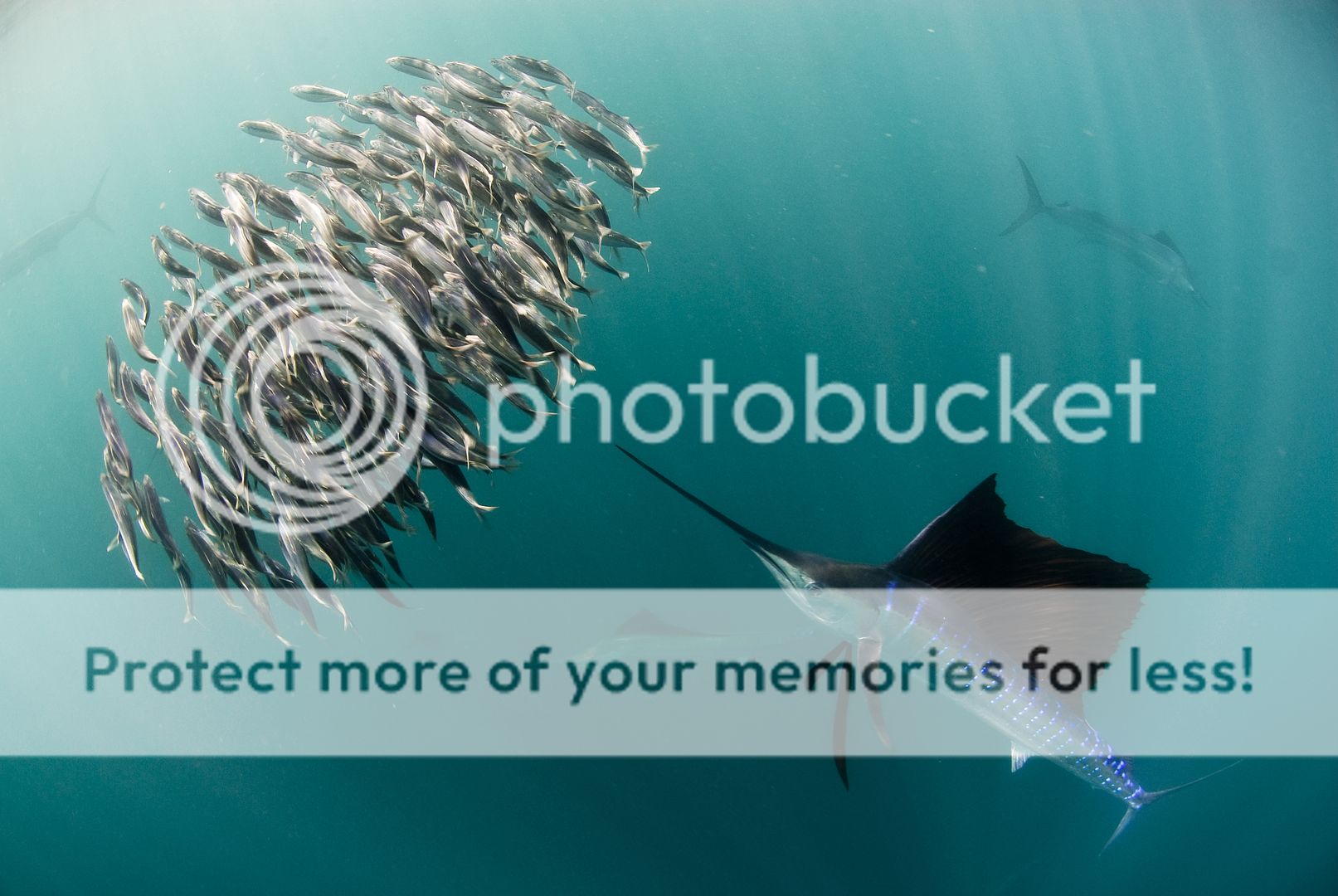
Interview with BBC Executive Producer Mike Gunton
Mike Gunton is the Creative Director of the Natural History Unit of the BBC, and oversaw production of LIFE. He has a first class degree in zoology and a doctorate from Bristol and Cambridge Universities.
ScriptPhD.com: Having now screened four episodes, and realized how grand and immense this project is, can you tell us about how the idea came about to do it?
Mike Gunton: It came about in about August of 2005, when we originally pitched [the project]. The team came together to properly begin work right at the beginning of 2006. Planet Earth hadn’t even aired; we had no idea how successful it was even going to be. The scope of Planet Earth, which was very much about the planet as a habitat and extraordinary landscapes and habitats of the world, and of course animals were in it, but they were animals within the landscape. And we felt it was kind of “the other side of the coin” to tell about that, which is about the lives of those animals and the struggles and challenges they face to survive in those habitats. So, we wondered if we could tell the complimentary side to the Planet Earth story—Planet Earth is the stage and LIFE is the play. That was broadly our thinking.
Also, of course, 2009 was the anniversary of the publication of The Origin of Species, so there was quite a lot of interest and focus on evolution and adaptation. And of course, LIFE is full of examples of extraordinary adaptation by animals, possessing adaptive “tricks”, whether physical or mental or behavioral, to overcome the challenges of survival. Then we realized that like Planet Earth, we had to be global, we had to go to every continent on the planet, and we also had to be completely broad-ranging in terms of the types of creatures and living things that we would feature to a much greater extent than we did on Planet Earth. We made sure that we’d cover everything from primates to insects and everything in-between.
SPhD: Just from the first few episodes, it seems the possibilities of choosing what animals to cover are infinite. So what ultimately dictated narrowing down exactly which species and scenarios you guys ultimately chose to capture?
MG: We decided there were, effectively, nine major groups of living things on the planet. We grouped all marine invertebrates together as a big catch-all of all creatures that life in the sea that aren’t fish. Then, to decide on the actual stories, that was probably one of the most daunting things of all, actually, to think, “There’s somewhere between 10 and 30 million species on the planet, how do we pick 150 that are going to be the most amazing, quintessential, rewarding representatives?” But we had a whole series of filters, and one of the main ones was that we did want to show people things they hadn’t seen before, things that would impress them and surprise them and show them how extraordinary animal behavior can be. Also, we wanted to show, rather than generic stories about lions or elephants or chimpanzees, very specific stories about individuals having individual challenges so that the audience sensed that when they’re watching, they’ve kind of been parachuted in on this particular animal’s life, on this critical day in its life.
SPhD: And it works quite spectacularly! I know we always want to anthropomorphize these creatures, but there was such personality that came out of some of the stories, like the poor hippo who couldn’t make his conquest, or the ibex out in Israel showing relief at outrunning the fox. So there was a lot of character that came out.
MG: See, I think this is really, really important, because anthropomorphism has a bad reputation. But I don’t think that what we’re doing is anthropomorphizing in the sense that people think it’s wrong, but actually people are frightened to accept that we’re all animals, [with] an integral spectrum of things that go on. And I think you can absolutely connect and relate to those animals without necessarily having to stretch to say these animals feel fear or concern or heroism or dedication, all those things that we admire in humans and ourselves. I think they’re absolutely there to be admired in animals. That’s something I feel very strongly myself, that there is a tendency to not think of animals as anything but little black boxes, when they clearly are not.
SPhD: Can you let us in on some of the secrets of what it took to capture these unlikely (and sometimes spectacular!) scenarios? Was it just patience, longevity, luck…
MG: All of those things, of course. I like to think we make our own luck. But luck is a big part of it. You do have to get lucky. First of all, we do an enormous amount of research, and we are drawing on a network or web of extraordinary experience. One of the things about people who work in the natural history industry is that once you join you never leave! So there are people who have worked in that place for thirty years, and the cameramen are the same. They have so much knowledge and experience that you start to “know” what’s likely to happen. And the cameramen tend to be brilliant naturalists. They have a real sixth sense about animal behavior and animal activities. So all of these things poured into the pot together, and stirred, does give you the chance to get things that you’d otherwise think to yourself are impossible. I often think to myself when I get back from a shoot, “How on Earth did we actually get that?” If you walk out into the Indonesian rain forest and hear a gibbon call, and it’s a mile away, how on Earth are you going to get anything more than a shot of that? And of course, we don’t do shots anymore—these are really complex, developed cinematic sequences. So the only way you can do that is by learning all the things in your favor: lots of periods of time, lots of science, we work a lot with the scientists. A lot of these stories actually come from them, because many of them are so new that you can’t get them in the textbooks or on the internet.
Watch a brief behind-the-scenes video that reveals some of the secrets of creating the series:
SPhD: Any precipitous moments for the crew? Anyone feel their life was in danger at any point?
MG: One of the things that we do is, we like to think that we are very safe. Knowing the animals, you don’t put yourself into situations where you are at risk. It’s very unlikely that anyone is going to get eaten by a lion, because we just know how it behaves in that way. Things where it got trickier, for example, are those komodo dragon sequences [in Episode 2]. Kevin, the cameraman, never felt particularly at risk, but he said it was unnerving because both creatures were so otherworldly. He has filmed reptiles and amphibians for 25 years, he said that once they’d made that first bite [into the buffalo that they’d end up excoriating], he felt they were like heat-seeking missiles. They weren’t going to be detracted from their mission, which was to track that prey for the next two and a half weeks. So although being amongst them was incredibly intimidating, he still felt that it was probably OK. Generally, when we film hunts, it’s over in a second. This was a kill that lasted two and a half weeks!
SPhD: Have any fun field stories to share with us?
MG: Just more along the theme of stuff that’s challenging or dangerous. One of the stories that we did that I think is probably one of the most courageous, certainly logistically the toughest, and most expensive, was we filmed a thing called a heat run, which is in the mammals program. It’s basically a humpback whale mating or courtship ritual. Effectively what happens is that a female, when she comes into season, will attract the males by various means—she whacks her pectoral fins and she bellows—and the males are then attracted to her. And once they get close to her, rather than allowing them to court her or to mate with her, she then swims off, and then effectively induces them to chase after her. While they’re doing that, they’re then in a fight with each other, and they’re all scrapping to see if they can be the one to eventually swim alongside her and be accepted to be the one to mate. These males get more and more hyped up and they start crashing into each other and push each other down and they blow these amazing bubbles out of their blowholes, and they come leaping out of the water and crashing down. And they’re swimming at seven or eight miles and hour. They get like a rocket.
To film them was incredibly challenging. We filmed them from the air, which meant that we had to have a helicopter. Now, this is the middle of the ocean, so we had to get the helicopter from Fiji and it was right at the end of its range. Filming from the boat itself was quite tricky, just to be able to keep up with them. But the most challenging and the most tricky thing of all was actually getting the underwater shots. Because the cameraman that did this couldn’t use scuba gear, the bubbles emitted from which would upset and disturb the whales. He had to do it on a snorkel. Then he had to take a single breath. So when these whales were hammering along, we had to get him in the boat, get ahead of them, plop in the water, take a breath, dive down, get some shots, come to the surface, take a breath, and so on about four or five times. He said it was like standing on a freeway with six juggernauts, six huge Mac trucks hammering towards him, with the drivers all having their eyes shut all while he’s having to hold his breath. We were in the water about 17 days, and in the end, it all boiled down to about a couple of hours.
SPhD: Given everything you’ve discussed, for people reading this before they’ve watched the mini-series, what would you guys collectively like the audience to get out of this? What are some of the things you hope that all this effort that went into this mini-series rewards them with?
MG: On two levels. As a television series, I want them to come away with thinking they’ve been immersed in the life of these animals, that the way we’ve done this, and the effort we’ve taken places them into the intimacies of these animals’ lives. And especially with the way that we’ve filmed it, so that you get the drama and the pace of and the excitement of the animals come through. And the other thing is, on a more philosophical level, I would hope that [the viewers] would take away, as I do, that the things that we admire in people can also be seen in animals. And that they are passionate, that they are concerned, they are wonderful, caring, sharing, powerful, aggressive, but they are individuals who have these unique characteristics. As a final though, people have asked me what I thought about LIFE, I can think of one word. Heroism. They are heroic. A lot of the animals do things that genuinely make the hairs on the back of your neck stand up in admiration of their heroic endeavors to survive.
LIFE premieres on the Discovery Channel Sunday, March 21st, 2010 at 8 PM ET/PT.
Enjoy more interactive content, including series photography, webisodes, a global map of endangered species, and and interactive “gene machine” to show relatedness of animals on the LIFE website. You can also follow LIFE on Facebook and Twitter.
View series trailer here:
~*ScriptPhD*~
*****************
ScriptPhD.com covers science and technology in entertainment, media and advertising. Hire our consulting company for creative content development.
Follow us on Twitter and our Facebook fan page. Subscribe to free email notifications of new posts on our home page.
]]>
You spot someone across a crowded room. There is eye contact. Your heart beats a little faster, palms are sweaty, you’re light-headed, and your suddenly-squeamish stomach has dropped to your knees. You’re either suffering from an onset of food poisoning or you’re in love. But what does that mean, scientifically, to fall in love, to be in love, to stay in love? In our special Valentine’s Day post, Editor Jovana Grbić expounds on the neuronal and biophysical markers of love, how psychologists and mathematicians have harnessed (and sometimes manipulated) this information to foster 21st Century digital-style romance, and concludes with a personal reflection on what love really means in the face of all of this science. You might just be surprised. So, Cupid, draw back your sword… and click “continue reading” for more!
What is This Thing Called Love?
Scientists are naturally attracted to romance. Why do we love? Falling in love can be many things emotionally, ranging from the exhilarating to the truly frightening. It is, however, also remarkably methodical, with three stages developed by legendary biological anthropologist Helen Fisher of Rutgers University—lust, attraction and attachment—each with its own distinct neurochemistry. During lust, in both men and women, two basic sex hormones, testosterone and estrogen, primarily drive behavior and psychology. Interestingly enough, although lust has been memorialized by artists aplenty, this stage of love is remarkably analytical. Psychologists have shown that those individuals primed with thoughts of lust had the highest levels of analytical thinking, while those primed with thoughts of love had the highest levels of creativity and insight. But we’ll get to love in a minute.

During attraction, a crucial trio of neurotransmitters, adrenaline, dopamine and serotonin, literally change our brain chemistry, leading to the phase of being obsessed and love-struck. Remember how we talked about a racing heart and sweaty palms upon seeing someone you’re smitten with? That would be a rush of adrenaline (also referred to as epinephrine), the “fight or flight” hormone/neurotransmitter, responsible for increased heart rate, contraction of blood vessels, and dilation of air passages. Dopamine is an evolutionarily-conserved, ubiquitous neurotransmitter the regulates basic functions such as anatomy, movement and cognition—a reason the loss of dopamine in Parkinson’s Disease patients can be so devastating. Dopamine is also responsible for the pleasure and reward mechanisms in the brain, hyperactivated by abuse of drugs such as cocaine and heroin. It has even been linked to creativity and idea generation via interactions of the frontal and temporal lobes and the limbic system. This is, therefore, that link between love and creativity that we mentioned above. Incidentally, the releasing or induction agent of norepinephrine and dopamine is a chemical called phenethylamine (PEA). Did you give your sweetheart chocolates for Valentine’s Day? If so, you did well, because chocolate is loaded with some of the highest naturally-occurring levels of phenethylamine, leading to a “chocolate theory of love.” If you can’t stop thinking about your beloved, it’s because of serotonin, one of love’s most important chemicals. Its neuronal functions include regulation of mood, appetite, sleep, and cognitive functions—all affected by love. Most modern generation antidepressants involve alteration of serotonin levels in the brain.
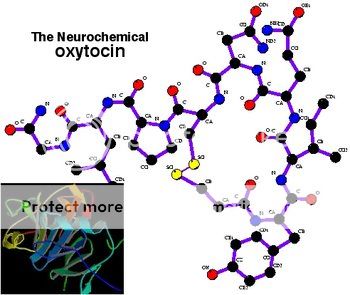
During latent attachment, two important chemicals “seal the deal” for long-term commitment: oxytocin and vasopressin. Oxytocin, often referred to as “the hormone of love,” is a neurotransmitter released during childbirth, breastfeeding and orgasms, and is crucial for species bonding, trust, and unconditional love. A sequence of experiments showed that trust formation in group activities, social interaction, and even psychological betrayal hinged on oxytocin levels. Vasopressin is a hormone responsible for memory formation and aggressive behavior. Recent research also suggests a role for vasopressin in sexual activity and in pair-bond formation. When vasopressin receptor gene was transplanted into mice (natural loners), they exhibited gregarious, social behaviors. That gene, the vasopressin receptor, was isolated in the prarie vole, among the select few of habitually monogamous mammals. When the receptor was introduced into their highly promiscuous Don Juan meadow vole relatives, they reformed their wicked rodent ways, fixated on one partner, guarded her jealously, and helped rear their young.
With all these chemicals floating around in the brain of the aroused and the amorous, it’s not surprising that scientists have deduced that the same brain chemistry responsible for addiction is also responsible for love!
The aforementioned Dr. Fisher gave an exceptional TED Talk in 2006 about her research in romantic love; its evolution, its biochemistry, and its social importance:

While the heart may hold the key to love, the brain helps unlock it. In fact, modern neuroscience and magnetic resonance imaging (MRI) scanning has helped answer a lot of questions about lasting romances, what being in love looks like, and whether there is a neurological difference between how we feel about casual sex, platonic friends, and those we’re in love with. In a critical fMRI study the brains of people who were newly in love were scanned while they looked at photographs, some of their friends and some of their lovers. Pictures of lovers activated specific areas of the brain (pictured on the left) that were not active when looking at pictures of good friends or thinking about sexual arousal, suggesting that romantic love and mate attachment aren’t so much of an emotion or state of mind as they are a deeply rooted drive akin to hunger, thirst and sex. Furthermore, a 2009 Florida State study showed that people in a committed relationship and are thinking of their partner subconsciously avert their eyes from an attractive member of the opposite sex. The most heartwarming part of all? It lasts. fMRI imaging of 10 women and 7 men still claiming to be madly in love with their partners after an average of 21 years of marriage showed equal brain activation to the earlier studies of nascent romances.
In case you’re blinded by all this science, remember this central fact about love: it’s good for you! The art of kissing has been shown to promote many health benefits, including stress relief, prevention of tooth and gum decay, a muscle workout, anti-aging effects, and therapeutic healing. If everything goes well with the kissing, it could lead to an even more healthy activity… sex! Not only does sex improve your sense of smell, boost fitness and weight loss, mitigate depression and pain, but it also strengthens the immune system, prevents heart disease and prostate cancer. In fact, “I have a headache” may be a specious excuse to avoid a little lovin’ since sex has been shown to cure migraines (and cause them, so be careful!). All of these facts and more, along with everything you ever wanted to know about sex, were collected and studied by neuroscientist Barry Komisaruk, endocrinologist Carlos Beyer-Flores and sexuality researcher Beverly Whipple in The Science of Orgasm. Add it to your shopping list today! The above activities may find you marching down the aisle, which especially for men is a very, very good thing. Studies show that married men not only live longer and healthier lives but also made more money and were more successful professionally (terrific New York Times article here).
Love in the Age of Algebra
While science can pinpoint the biological markers of love, can it act as a prognosticator of who will get together, and more importantly, stay together? Mathematicians and statisticians are sure trying! One of the foremost world-renowned experts on relationship and marriage modeling is University of Washington psychology professor John Gottman, head of The Gottman Institute and author of Why Marriages Succeed or Fail. Dr. Gottman uses complex mathematical modeling and microexpression analysis to predict with 90% accuracy which newlyweds will remain married four to six years later, and with 83% accuracy seven to nine years thereafter. In this terrific profile of Gottman’s “love lab,” we see that his methodology includes use of a facial action coding system (FACS) to analyze videotapes for minute signs of negative expressions such as contempt or disgust during simple conversations or stories. Take a look at this brief, fascinating video of how it all works:
Naturally, the next evolutionary step has been to cash in on this science in the online dating game, where successful matchmaking hinges on predicting which couples will be ideally suited to each other on paper. Dr. Helen Fisher has used her expertise in the chemicals of love to match couples through their brain chemistry personality profiles on Chemistry.com. eHarmony has an in-house research psychologist, Gian Gonzaga, an ardent proponent of personality assessment and skeptic of opposites attracting. Finally, the increasingly popular Match.com boasts of a radically advanced new personality profile called “match insights,” devised by none other than Dr. Fisher and medical doctor Jason Stockwood. If you don’t believe in the power of the soft sciences, you can take your matchmaking to a molecular level, with several new companies claiming to connect couples based on DNA fingerprints and the biological instinct to breed with people whose immune system differs significantly from ours for genetic stability. ScientificMatch.com promises that its pricey, patent-pending technology “uses your DNA to find others with a natural odor you’ll love, with whom you’d have healthier children, a more satisfying sex life and more,” while GenePartner.com tests couples based on only one group of genes: human leukocyte antigens (HLAs), which play an essential role in immune function. The accuracy of all of these sites? Mixed. Despite the problem of rampant lying in internet dating profiles and dating in volume to pinpoint the right match, some research has shown remarkably high success (as high as 94%) in e-partners that had met in person.

What’s Science Got To Do With It?
In the shadow of such vast technological advancement and deduction of romance to the binary and biological, readers of this blog might imagine that its scientist editor might condemn decidedly empirical views of love. They would be wrong. For while numbers and test tubes and brain scanning machines can help us describe love’s physiological and psychological nimbus, its esoteric nucleus will forever be elusive. And thank heavens for that! There exists no mathematical formula (other than perhaps chaos theory) that can explain the idea of two people, diametrical as day and night, falling in love and somehow making it work. No MRI is equipped with a magnet strong enough to properly quantify the utter heartbreak of those that don’t. There is not a statistical deviation alive that could categorize my grandparents’ unlikely 55-year marriage, a marriage that survived World War II, Communism, a miscarriage, the death of a child, poverty, imprisonment in a political gulag, and yes, even a torrid affair. After my grandfather died, my grandmother eked out another feeble few years before succumbing to what else but a broken heart. It is within that enigma that generations of poets, scribes, musicians, screenwriters, and artists dating all the way back to humanity’s cultural dawning—the Stone Age—have never exhausted of material, and they never will.
Love exists outside of all the things that science is—the ordered, the examined, the sterile, the safe, and the rational. It is inherently irrational, messy, disordered and frustrating. Science and technology forever aim to eliminate mistakes, imperfection and any obstacles to precision, which in matters of the heart would be a downright shame. Love is not about impersonal personality surveys, neurotransmitter cascades or the incessant beeping of laboratory machines measuring its output. It’s about magic, mystery, voodoo and charm. It’s about experimenting, floating off the ground, being scared out of your mind, laughing uncontrollably and inexplicably, flowers, bad dates, good dates, tubs of ice cream and chocolate with your closest friends, picking yourself up and starting the whole process all over again. It’s not about guarantees or prognostications, not even by smart University of Washington psychologists. It’s about having no clue what you’re doing, figuring it out as you go along, deviating from formulas, books, and everything scientists have ever told you, taking a chance on the stranger across a crowded room, and the moon hitting your eye like a big-a pizza pie.
Now that’s amore!
Hope everyone had a great Valentine’s Day.
~*ScriptPhD*~
*****************
ScriptPhD.com covers science and technology in entertainment, media and advertising. Hire our consulting company for creative content development.
Follow us on Twitter and our Facebook fan page. Subscribe to free email notifications of new posts on our home page.
]]>
